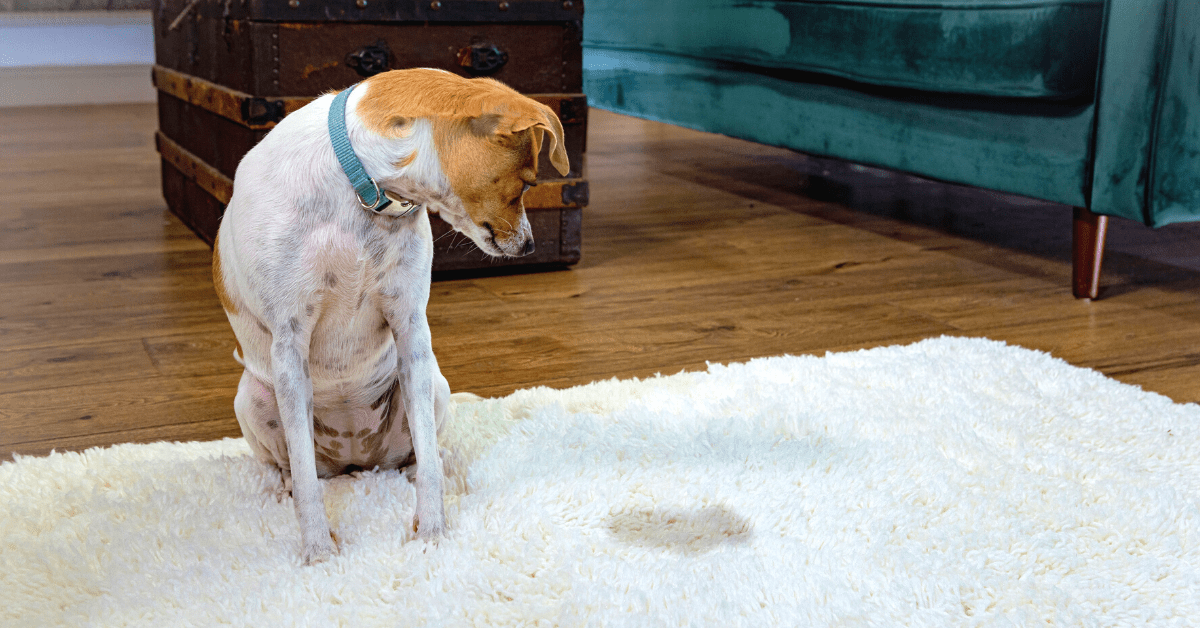
How to Stop Your Dog from Peeing in the House
When your dog’s peeing in the house becomes a habit, it can leave you feeling confused, frustrated, and even desperate. Housebreaking issues have even led some dog parents to surrender their pets.
If your dog is peeing in the house more than occasionally, here’s what you can do to help him break the habit.
10 Proven Ways to Stop Your Dog from Peeing in the House
1. Visit Your Veterinarian
The first thing you should do if your dog is peeing in the house is to talk to your veterinarian. There are a variety of medical conditions that can lead to dogs urinating in the house, and treating them is vital for your dog’s health and for solving the peeing problem.
Some issues may be relatively minor, and some are more serious. Either way, your veterinarian is the best person to diagnose any medical issues causing your dog to pee in the house.
Medical issues that can lead to urinating in the house include:
- Diabetes
- Pain when squatting or lifting the leg to urinate (a possible sign of Canine Osteoarthritis)
- An infected bladder or urinary tract
- Bladder stones
- Kidney or liver disease
- Tumors
- Cushing’s or Addison’s disease
- Adrenal gland issues
- Intestinal parasites
- Cognitive problems caused by brain disease or dementia
- Age-related illnesses and conditions
- Prostate problems
In addition to ruling out medical issues, your veterinarian may also be able to help you determine other reasons for your dog’s urinating. If it’s due to dominance issues or anxiety, a Certified Veterinary Behaviorist can give you tips to help solve the problem.
2. Clean Up Accidents Properly
This is listed just below “take your dog to the vet” for a very good reason. Not cleaning up accidents properly is one of the most common reasons why dogs continue to pee indoors.
Do you “spray and wipe away?” This could be the reason your dog is continuing to pee indoors!
Even if you don’t notice a smell, your dog may detect lingering odors that invite him to return to the scene of the crime.
A good enzymatic cleaner is the most important thing you’ll need. These cleaners work differently from typical household cleaners and they must be used properly for them to be effective.
Enzymatic cleaners actually break down the odor so that even your dog’s sensitive nose won’t be able to smell anything. The natural enzymes eat the odor-causing bacteria until they literally disappear. This means the product needs to have sustained contact with the surface.
My dog Tulip and I love our Kinderbean No Stress Mess Eraser. It’s an enzyme cleaner that has a subtle natural scent and is safe to use around your pets.
If you suspect that your dog may have peed in areas that you haven’t located, a black light
can help you to find any hidden spots and treat them before your dog develops the habit of going there to do his business.
Pin me!

3. Spay or Neuter Your Dog
Intact dogs are much more likely to engage in urine marking behaviors. Spaying or neutering frequently reduces or greatly eliminates the behavior.
If your dog is older, it’s more likely that the urine marking has become a habit and you’ll have to use other techniques as well to bring the behavior completely under control.
4. Train (or Retrain) Your Dog
In puppies, peeing in the house frequently means that they just need more training. If your older dog is peeing in the house, revisiting the training process sometimes solves the issue.
Training a puppy takes time, patience, and consistency. Constant supervision helps to ensure that you can avoid accidents.
If you can’t supervise, keep your puppy confined to a crate, or a space small enough to prevent him from peeing there. You may want to block off a section of a bathroom or laundry room. Always make sure it’s large enough that your puppy has space to stand, turn around, and lie down. And of course, never leave your puppy unattended for hours on end.
Take your puppy outside frequently – at least every two hours as well as immediately after waking up, before going to bed, and right after eating. When you take your puppy outside, use a leash, and go to the same spot each time. It’s a good idea to use a specific word or phrase while he relieves himself so that eventually he will learn to go on command. Make sure to praise him and offer a treat immediately after he does his business.
Avoid using puppy pads, since they can sometimes lead to confusion and teach him that he is allowed to pee in the house. Don’t yell at him when he has an accident, but if you catch him in the act, you can use a loud noise like clapping to let him know that it’s not OK.
Housebreaking an adult dog is a similar process. Many experts recommend a method known as the umbilical cord method. This involves keeping your dog tied to you on a leash so that you can supervise him at all times. After a number of days you can gradually give him more freedom.
Dogs are creatures of habit and thrive on routine, and this is especially important if you are housebreaking. Keeping his feeding on a predictable schedule will also help to establish a predictable schedule for potty time.
A few tweaks in your dog’s routine can set him up for success if you are trying to break him of the habit of peeing in the house. If your dog consistently has accidents in the same place, you may be able to change the meaning of that location by placing his food and water there. Most dogs will not pee where they eat. In addition, make sure he’s getting enough physical exercise and mental stimulation.
5. Give Lots of Potty Breaks
Depending on age, breed, size, and other factors, some dogs just can’t hold it as long as others. It’s important to make sure that your dog is getting the chance to relieve himself as often as he needs.
No matter how well trained, dogs’ bladders have their limits, and going beyond those limits leads to accidents. As a general rule, puppies should start by going out every hour. Then you can add one additional hour for every month of age. Adult dogs should have the chance to go between 3 and 5 times per day. Most can hold it for 6-8 hours if needed once they’ve been properly trained. Senior dogs may need to go slightly more often – possibly every 4-6 hours.
6. Identify and Eliminate Anxiety Triggers
If you pay close attention to when and where your dog pees, you may notice a pattern. It may be possible to identify the cause of the peeing and make minor changes in your dog’s routine or environment that make accidents much less likely to happen.
If certain noises or events trigger peeing caused by anxiety, you may be able to lessen the anxiety by playing music or white noise to mask those sounds. A pheromone collar or diffuser may also help to keep him calm if he has noise phobia, separation anxiety, or other anxiety issues.
Adaptil products are drug free and mimic the natural hormones that mother dogs emit to make their puppies feel safe and calm. The diffuser covers up to 700 square feet and can be used in the area of the house where your dog tends to tinkle. It’s odorless, so you won’t smell anything, but you may notice a difference in your dog’s anxiety.
The calming collar can be worn all the time except for during bathing or grooming, and it’s great for use when he’s outside or you’re away from home with your dog.
These solutions can be particularly helpful when there have been changes in your dog’s environment, such as introducing a new person, when a member of the household moves out, or when moving to a new home.
Some dogs with anxiety also respond well to calming CBD oil or treats.
These tips may also help with a dog who has submissive peeing issues. Dogs that are rescued or come from an abusive background may be more likely to pee out of submission, but this behavior is rooted in anxiety. Keep your dog in a state of calm and consistently reward them for good behavior.
Certain dogs may need to get help from a veterinary behaviorist.
7. Calm the Excitement
In some cases, you might be your dog’s trigger! If your dog gets overly excited to see you or someone they love, excited peeing may happen. This is especially common in small dogs with small bladders.
When you arrive home, speak to your dog in a very calm manner without a high pitch in your voice. Take your dog outside right away.
If you’re having guests, take your dog outside just prior to them arriving and advise them to greet your dog with a calm voice.
8. Introduce New Things Carefully
If your dog tends to “mark” new items that come into the house, avoid leaving thing in areas that make them accessible. Introduce new people and objects slowly and with careful supervision. Here’s a blog post that has more information on urine marking.
9. Determine Why Your Dog Won’t Go Outside in Bad Weather
We don’t want to be outside any more than our dogs do! Ideally, we would always watch the forecast and take our dogs out before any bad weather hits. Unfortunately, that’s not always realistic.
For some dogs, peeing outside is simply too scary when the weather is bad. If this is the case, calming collars and pheromones mentioned above may help.
Other dogs simply don’t like getting wet. If this is the case, a jacket like this one may help.
10. Get Professional Help
There may be many factors that are contributing to your dog peeing in the house. In addition to consulting with your veterinarian, you may want to arrange a consultation or a few sessions with a Veterinary Behaviorist who will take the entire situation into consideration and prescribe specific behavior modification techniques, with or without medication.
FAQs About Dogs Peeing in the House
1. Will a dog belly band work?
I never recommend belly bands unless your dog has a medical condition. Even then, it’s best to check with your vet. Belly bands can be very uncomfortable for your dog and if they’re too tight, they can hurt your dog.
If your dog’s indoor peeing is rooted in behavior, such as anxiety, or territorial marking, it’s much better to address the root cause.
2. Do pee pads help train your dog?
Pee pads mean your dog is still peeing in the house. I only recommend pee pads if you’re living in a high rise or other location where it may not be physically possible to get your dog out in time after he signals he needs to pee.
Even then, a balcony with Doggie Lawn or other artificial turf is best, since they have a designated “outside spot” in which to do their business.
3. My dog used to be well trained, but now he’s suddenly peeing in the house. What happened?
This behavior can sometimes be rooted in anxiety. Have you recently moved? Has a family member recently moved out or moved in? Your dog may be signaling to you that he’s uncomfortable with his new surroundings.
Or, he may be facing a medical issue. Anytime your dog’s normal pattern of behavior has changed, it’s important to rule out medical issues.
4. What’s the quickest way to train a dog to pee outside?
We all want a fast track solution to this problem! Unfortunately, what it requires most is patience and consistency.
That said, I have seen certain methods work very quickly, in just days or weeks. I used the umbilical cord method with my Tulip because I found that during long work periods, I couldn’t watch her as carefully. Keeping her leashed to my desk area helped me to understand the cues she was giving me when she needed to go out.
I’ve also seen great success with pet parents using the “eat where you peed” method. One new dog mom was at her wit’s end when her rescued corgi wouldn’t stop peeing everywhere. Once she placed her dog’s food dish next to where she peed, her dog got the hint and within days was trained to only go outside. This may take repetition and consistently placing the food near every pee spot.
The Tail End
If your dog is peeing in the house, it’s not hopeless! With patience, consistency, and possibly a little trial and error, you can treat the issue and enjoy a happy dog and a pee-free home.



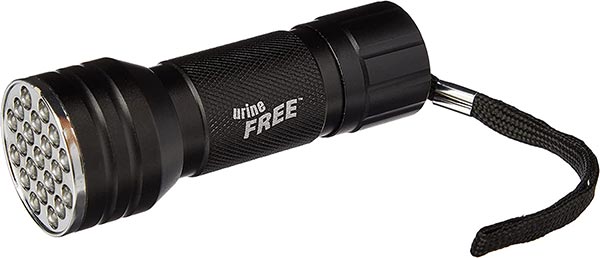

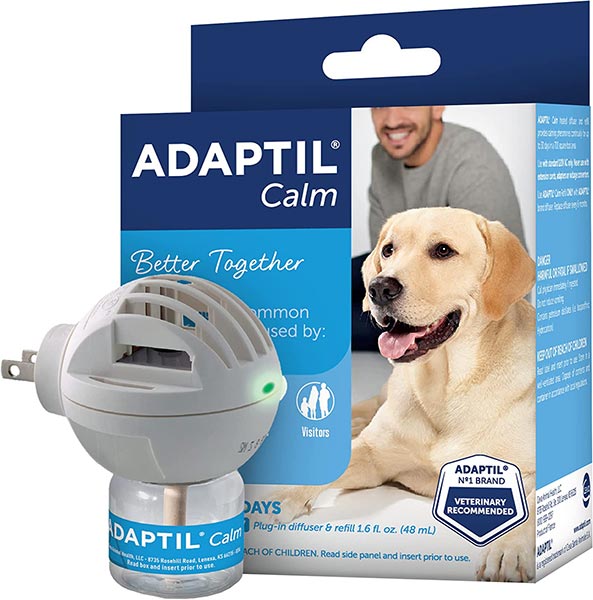
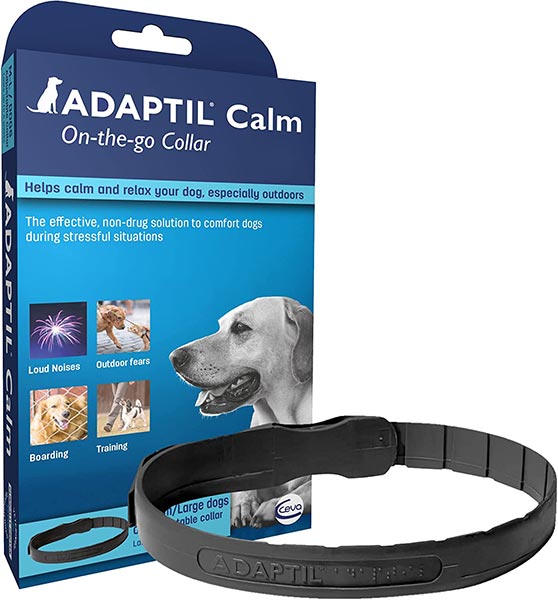
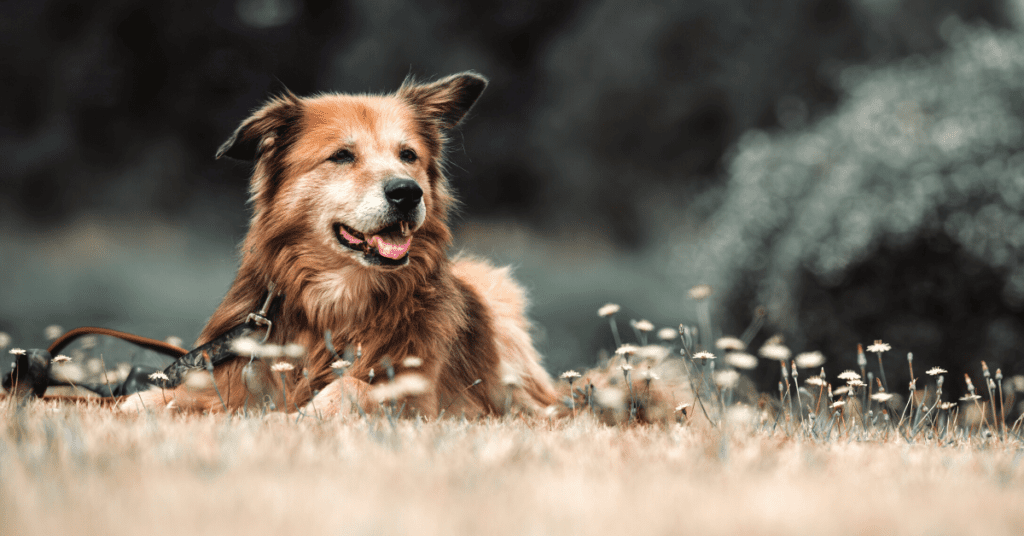

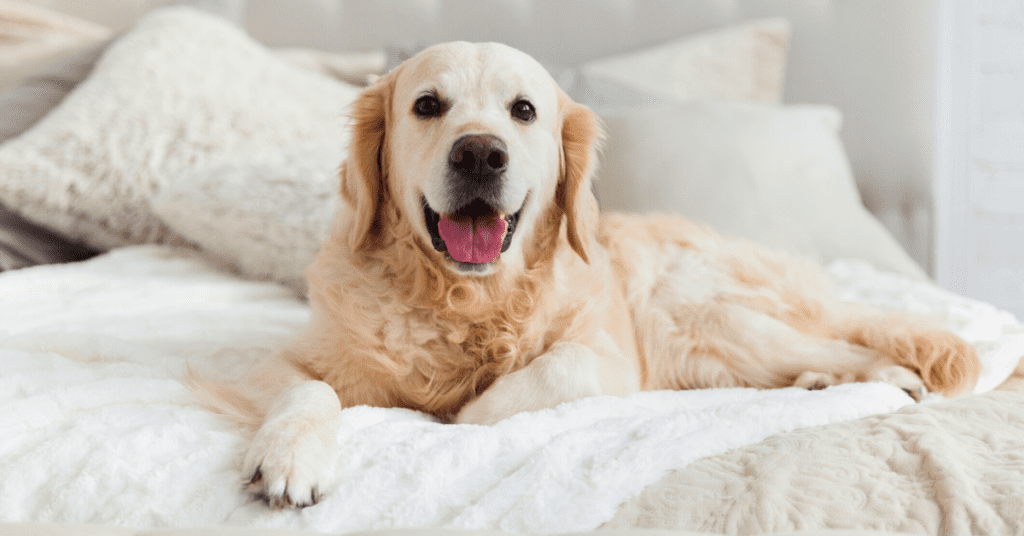



my dog is a border collie and she has a hard time telling me that she has ti go, and i don’t know haw to stop her from doing that but we cant get her fixed cause my family doesn’t have that money, and she keeps peeing in the same area. and i don’t know if i’m just not cleaning it up right or i just need to get rid of patch and let another family have her or if there is something i can do to help her stop peeing in the house. it would be great if you could respond to my problem
Hi Kayley,
I am sorry to hear that your dog is peeing in the house! How often does she go outside? Dogs her size should be taken outside at least every 4-6 hours.
If she is peeing in the same spot, it is likely she can still smell her pee in that spot. Using a bio-enzymatic cleaner is key when getting the scent out. Even if you can’t smell it anymore, she probably can! I really like this one from Unique Pet Care: https://amzn.to/3pybM4q
Additionally, try putting treats down in the spot she pees. If she begins to associate that spot with food, she should stop going there.
Also, depending on where you live, there are spay and neuter clinics that are very affordable! I would recommend looking into one in your area. Spaying her has many health benefits, and also helps with bladder control.
Hope this helps! Keep me posted.
Kristen
My dog was trained I move in with my son he has a male fixed and one small female not fixed. I am going to fix him not till I do how do I stop him from peeping. They go out several times a day but he pees in the house
Hi Virginia,
Aww, I am sorry to hear that your dog is marking!
Unfortunately, after moving, it is not uncommon for dogs to begin this behavior especially if there are other animals in the home. She will need some time to adjust. I would definitely recommend getting the female and your male fixed if that is an option. Un-neutered males and un-spayed females are most likely to mark.
Try putting treats where he marks. If he associates the area he marks with food, he is less likely to return there. Ensure he is going out enough – depending on his size every few hours. Additionally, clean the areas he marks in with a bio-enzymatic cleaner. This is key in getting the smell out of the area. Even if you can’t smell it, he can! I like this one: https://amzn.to/3avp8KG
I hope this helps! Keep me posted.
Kristen
We have a doggie door for our dogs to go outside whenever they wish. My little ones would rather pee in front of the fridge, baby gate, and pantry. We have no carpets in our house, just tile and hardwood. We use the Bissell Pet crosswave for clean up! Why won’t they just go outside. What can we do?
I hope someone answers this. I have the same situation but I have 3 small boy dogs unlimited access to the outside and they constantly pee in the house. I am so frustrated.
We have a female bull terrier that we rescued from a puppy mill about 3 years ago. Ever since we have had her she will go in me and my husbands bedroom and pee. If we close the door she won’t pee anywhere else. I work from home so I let her out often. When I leave the house I have to crate her because if I don’t she will pee. Even if I just go outside to get something I have to put her in a crate. Is there a way I can eliminate her from doing this? I hate having to put her in her crate so often.
My dog is 12 years old.He started peeing in the house right after my husband passed away in November.What can I do to stop this?
Hello i just got a 8 week old White Lab female puppy and she keeps peeing in the house and we trued the reward thing if she goes outside and pees but she still will just run around for 4 minutes or so than boom she peeing. Idk if it’s because my male cat hasnt gotten to liking her yet so she marking her areas but at the breeder house she used pee pads so could that be the reason she is having accidents . And we have a dog in hone training to help with pooty training and leash training but they aren’t coming until a week so what can i do to make her show progress in going potty outside ?
I have recently installed a doggie door for my little guy to go out and do his business on his own but it seems he only does that when someone is home. He’s had a couple accidents this week, both #1 & #2, and it is always in the same spot. I do a good clean but I guess I will do another good one today. Any tips on convincing him to use the door while he is home on his own? Should I go back to using his crate when we leave? He’s 3 so I do want him to be able to have freedom but maybe as a smaller dog, he can’t hold it as long? I’m going to try the treats there and maybe food too but it happened today and I was gone for less than an hour. Super frustrated.
I FEEL your pain ours is the same
I hope someone answers this. I have the same situation but I have 3 small boy dogs unlimited access to the outside and they constantly pee in the house. I am so frustrated.
I really hope to get some advice. My 4 years old Pomeranian has been always pee in the house. Pretty much everywhere that he can possibly pee including his own bed, our couch, our bed, our blanket, on the table, chairs legs, bin so pretty much the entire house randomly. It is extremely frustrating as he has a doggie door since he’s been with us and it’s happening every day, few times a day. PLEASE HELP